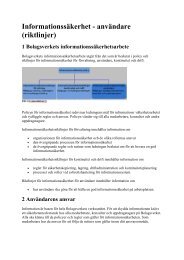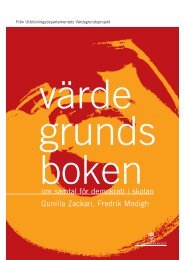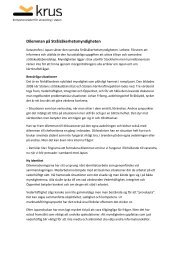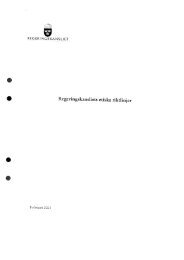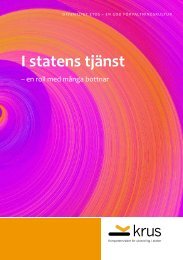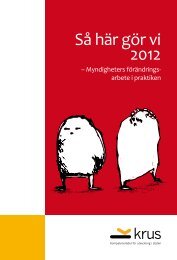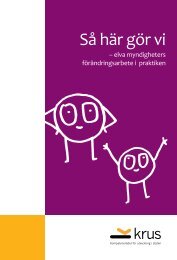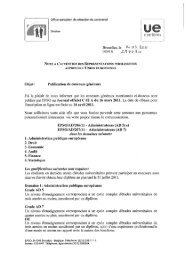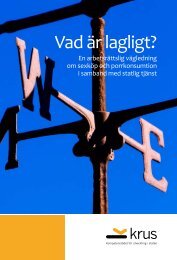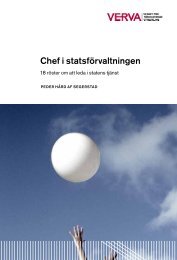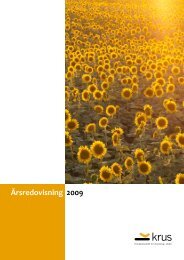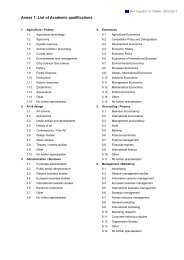Dialogkompetens i skolans vardag - Publikationer - LTU - Luleå ...
Dialogkompetens i skolans vardag - Publikationer - LTU - Luleå ...
Dialogkompetens i skolans vardag - Publikationer - LTU - Luleå ...
You also want an ePaper? Increase the reach of your titles
YUMPU automatically turns print PDFs into web optimized ePapers that Google loves.
Listening Environment in School 7<br />
minimum in order to make it more visible in the latter stages. The analysis<br />
was conducted in the following series of steps:<br />
1. All the texts were read, with the aim of gaining an overview and a<br />
picture of the whole material.<br />
. The details of the pupils’ choices of listening environments were<br />
focused on.<br />
. The pupils’ choices and explanations were searched for school by<br />
school.<br />
. The explanations were listed separately.<br />
2. In accordance with the starting point of this study, a more holistic<br />
approach was used to sort and reduce the explanations into overall<br />
categories.<br />
. Overall categories were searched for in the whole material.<br />
. The categories were sorted and condensed into four more overarching<br />
categories.<br />
. The relation between the number of pupils and the categories was<br />
made visible.<br />
3. Research colleagues were involved in finding out whether the preunderstanding<br />
of the researcher had made it difficult to ‘‘see’’ the<br />
content of the material.<br />
. Seven independent (co-)researchers read a part of the material and<br />
constructed their own categories.<br />
. The categories of the researcher and the co-researchers were discussed<br />
and were thereafter found to complement each other.<br />
. Finally, the four categories were tested to discover whether they<br />
covered the content of all the texts (Table 1).<br />
Since all participating teachers worked with pupil with disabilities they had<br />
knowledge and experience of handling ethically sensitive issues. This was of<br />
great value, since pupils of different ages were involved. In such small schools<br />
and classes it is a crucial issue to take pupils’ anonymity into consideration.<br />
In view of these ethical perspectives, it was decided at an early stage to present<br />
the results as a whole and not to compare individual schools.<br />
Comments Regarding the Method<br />
The differences in pupil’s ages can be seen either as an advantage or a<br />
disadvantage. Valuable results for future educational opportunities have been<br />
made visible in an interview study where deaf pupils aged between 8 and<br />
10 were asked about their communication situation in school (Preisler,<br />
Tvingstedt & Ahlström 2005). Since the design of the present study was based<br />
on the idea that every child is seen as a resource for their own learning,<br />
the different ages can be viewed as a resource for the entire study. To be<br />
asked to give a personal opinion is also a part of the learning and<br />
empowerment inherent in the action research process. To enable pupils to<br />
adapt an open-minded attitude about telling their stories, the pictures



